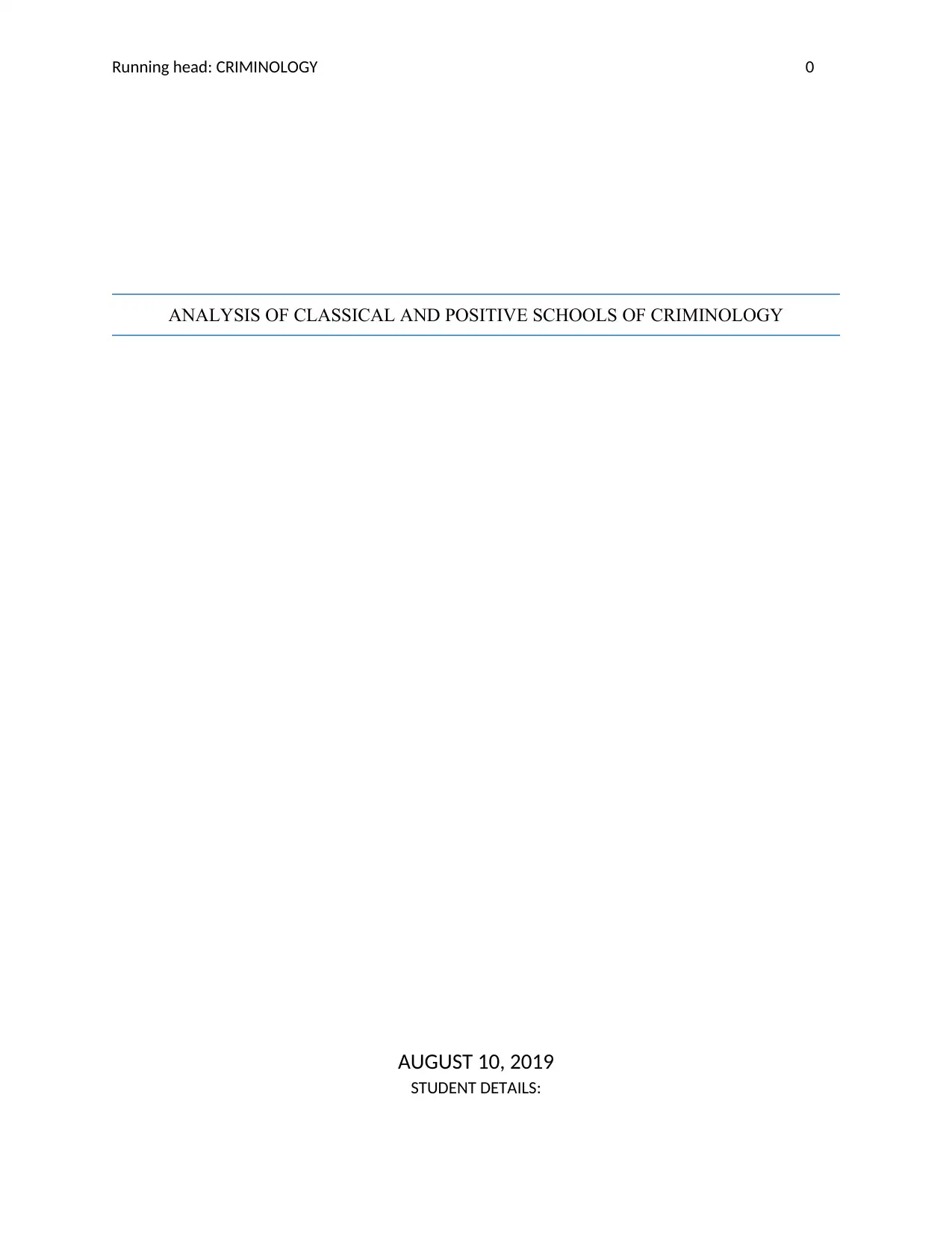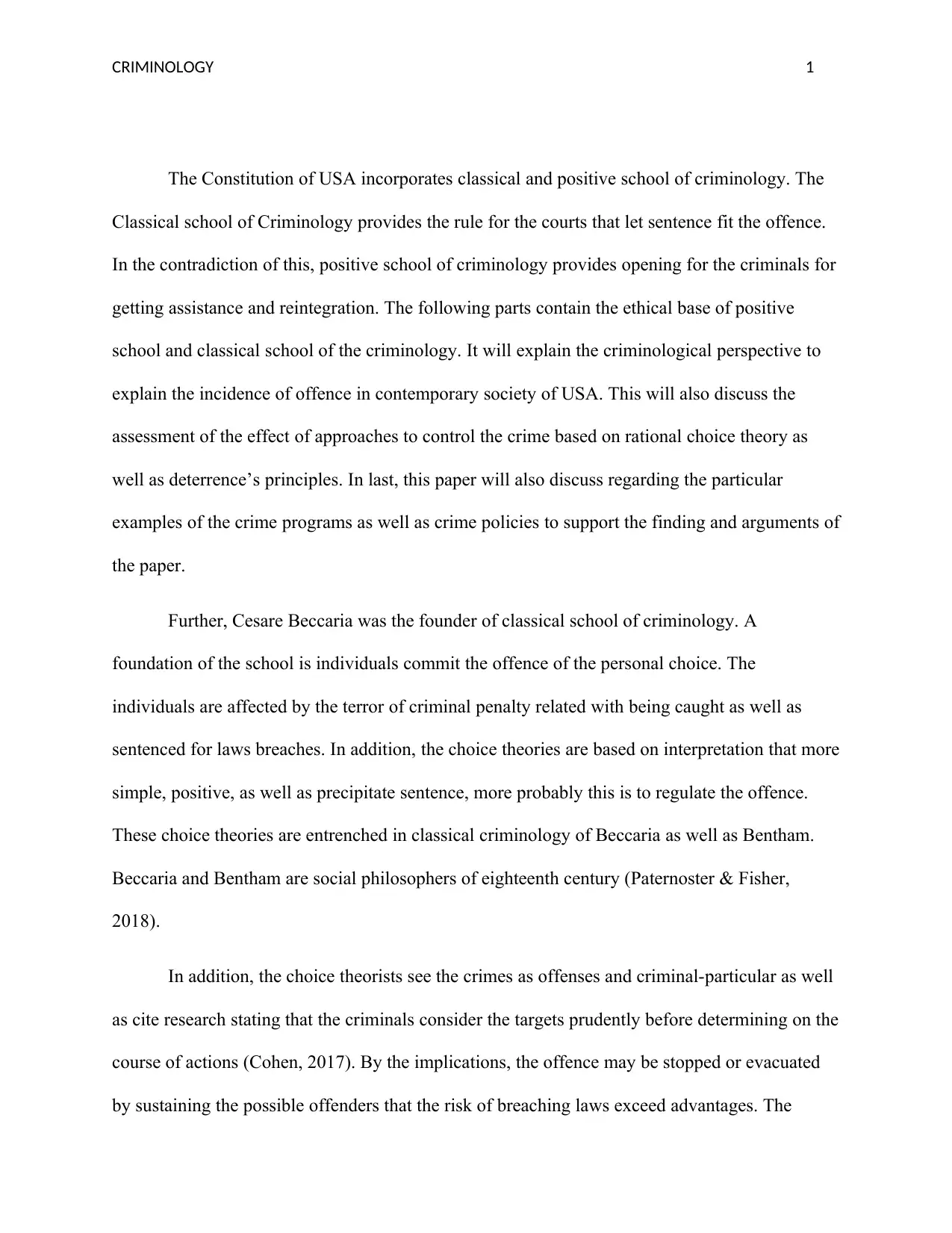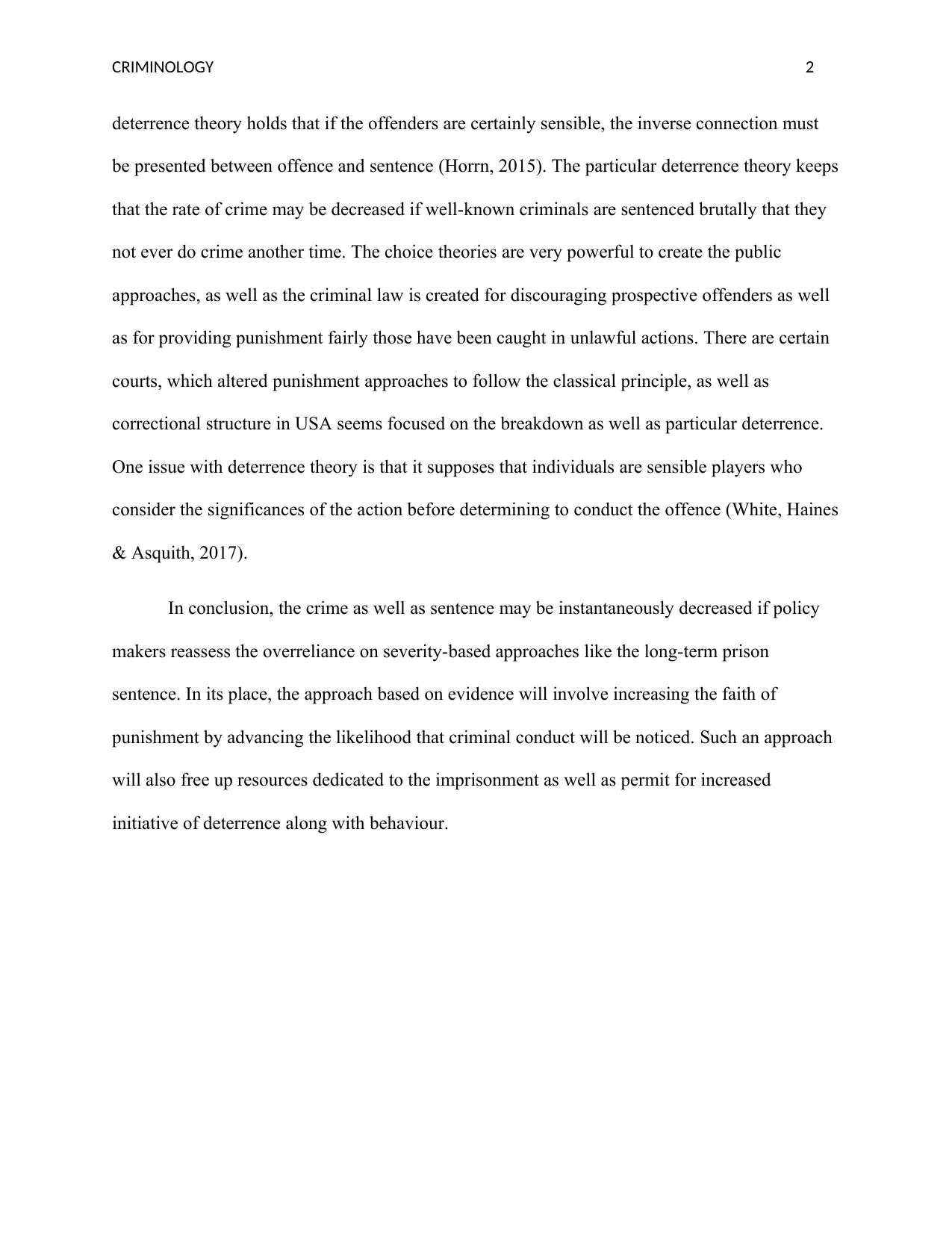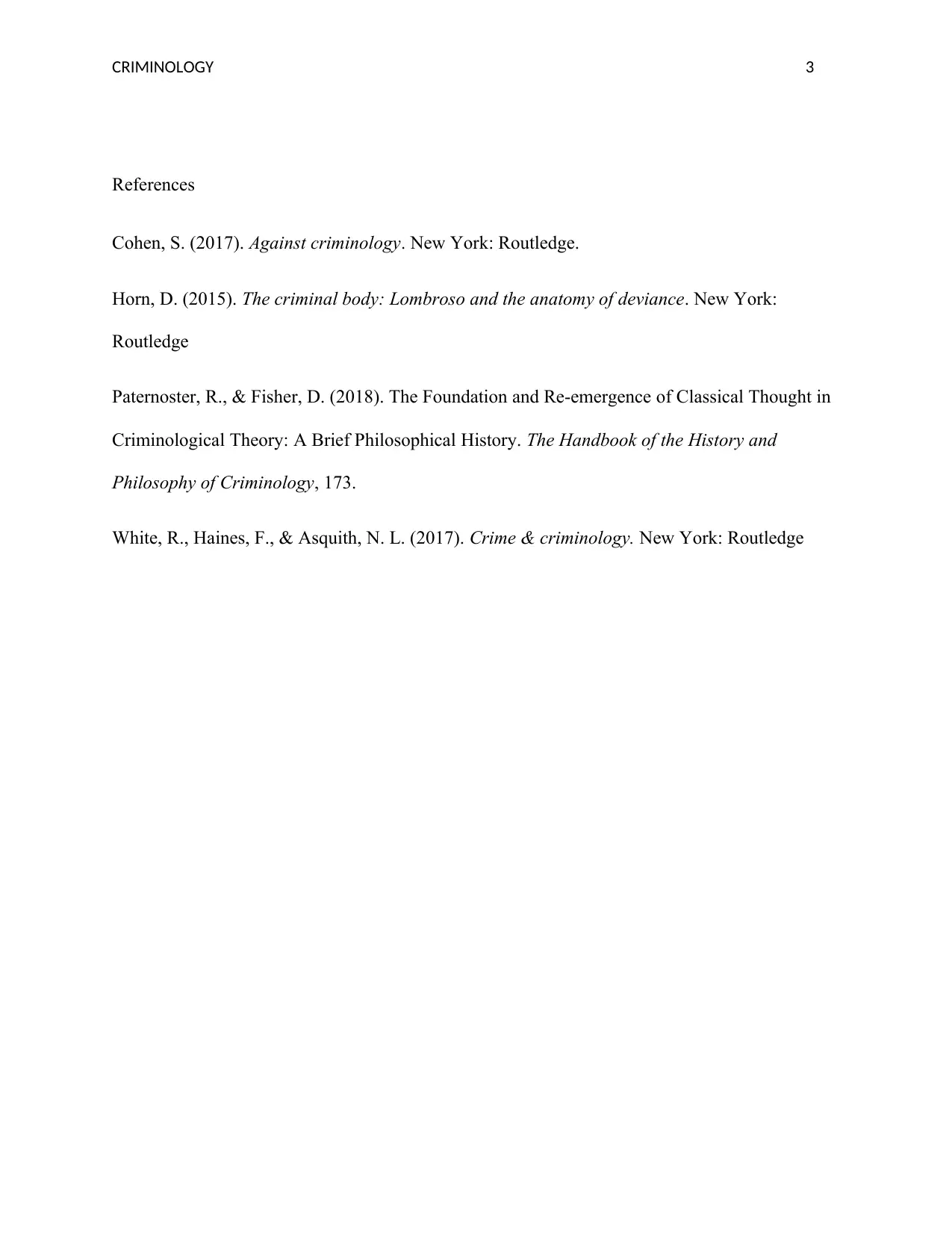Criminology Essay: Comparing Classical and Positive Schools of Thought
VerifiedAdded on 2022/10/09
|4
|696
|13
Essay
AI Summary
This essay provides an analysis of the classical and positive schools of criminology, examining their ethical underpinnings and criminological perspectives within the context of the United States. It explores the influence of Cesare Beccaria and the rational choice theory, as well as the principles of deterrence. The paper delves into how these schools explain the incidence of crime in contemporary society and assesses the impact of different approaches to crime control. Furthermore, it discusses specific examples of crime programs and policies, supporting its arguments and findings with relevant research and literature. The essay concludes by suggesting policy adjustments that could potentially decrease crime rates by focusing on the certainty of punishment and evidence-based approaches.
1 out of 4










![[object Object]](/_next/static/media/star-bottom.7253800d.svg)